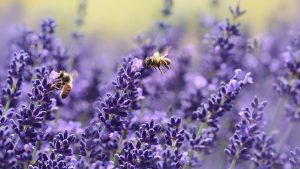Introduction
Cauliflower is a versatile and nutritious vegetable that can be enjoyed in various culinary dishes. Growing and caring for cauliflower in your garden is a rewarding experience that allows you to enjoy the freshest and most flavorful heads of this cruciferous vegetable. In this article, we will provide you with a comprehensive guide on how to grow and care for cauliflower, including step-by-step instructions, answers to frequently asked questions, and some final thoughts to help you achieve a successful harvest.
How to Grow and Care for Cauliflower
- Choosing the Right Variety:
Select a cauliflower variety that is suitable for your climate and growing conditions. Consider factors such as heat tolerance, maturity period, and head size.
Popular cauliflower varieties include Snowball, Purple Cape, Romanesco, and Cheddar.
- Planting Cauliflower:
Cauliflower is a cool-season crop, so it is best to start seeds indoors 6-8 weeks before the last expected frost date in your area. Alternatively, you can purchase transplants from a local nursery.
Prepare the soil by adding compost or well-rotted manure to improve fertility and drainage. Cauliflower prefers a slightly acidic soil with a pH level between 6.0 and 7.0.
Plant the seedlings or transplants in a sunny location with at least 6 hours of direct sunlight per day. Space the plants about 18-24 inches (45-60 cm) apart, allowing enough room for their heads to develop.

- Watering and Mulching:
Cauliflower plants require consistent moisture throughout the growing season. Water deeply and regularly, ensuring the soil remains evenly moist. Avoid overwatering, as it can lead to root rot.
Applying a layer of organic mulch, such as straw or shredded leaves, around the plants helps retain soil moisture, suppress weeds, and regulate soil temperature.
- Fertilizing:
Before planting, incorporate a balanced, slow-release fertilizer into the soil according to package instructions. This will provide essential nutrients for the cauliflower plants.
Once the plants have established, side-dress them with a nitrogen-rich fertilizer, such as blood meal or fish emulsion, every 3-4 weeks to promote healthy growth.
- Protecting from Pests and Diseases:
Cauliflower is susceptible to certain pests, including aphids, cabbage loopers, and cabbage worms. Monitor your plants regularly and take appropriate measures, such as applying organic insecticides or using row covers, to protect them.
Common cauliflower diseases include clubroot and downy mildew. Practice crop rotation and ensure good air circulation around the plants to minimize the risk of these diseases.
Frequently Asked Questions (FAQs)
Q1: When is the best time to grow cauliflower?
A1: Cauliflower is a cool-season crop and grows best in spring or fall when temperatures are cooler. Start seeds indoors 6-8 weeks before the last expected frost date or purchase transplants for outdoor planting.
Q2: How long does it take for cauliflower to mature?
A2: The time to maturity for cauliflower varies depending on the variety, but it generally ranges from 60 to 100 days from transplanting.
Q3: How do I know when cauliflower is ready to harvest?
A3: Cauliflower is ready to harvest when the heads reach a mature size and have a firm texture. The heads should be dense and compact, with tight curds. Harvest before the heads start to separate or discolor.
Q4: Can I grow cauliflower in containers?
A4: Yes, cauliflower can be grown in containers. Choose a large container with good drainage and use a well-draining potting mix. Provide adequate sunlight and water regularly.
Final Thoughts
Growing and caring for cauliflower requires attention to detail, but the effort is rewarded with a delicious and nutritious vegetable. By following the steps outlined above, you can successfully cultivate cauliflower in your garden. Remember to choose the right variety, provide adequate water and nutrients, protect the plants from pests and diseases, and harvest the heads at the appropriate time. Enjoy the satisfaction of growing your own cauliflower and incorporating it into your favorite recipes.










